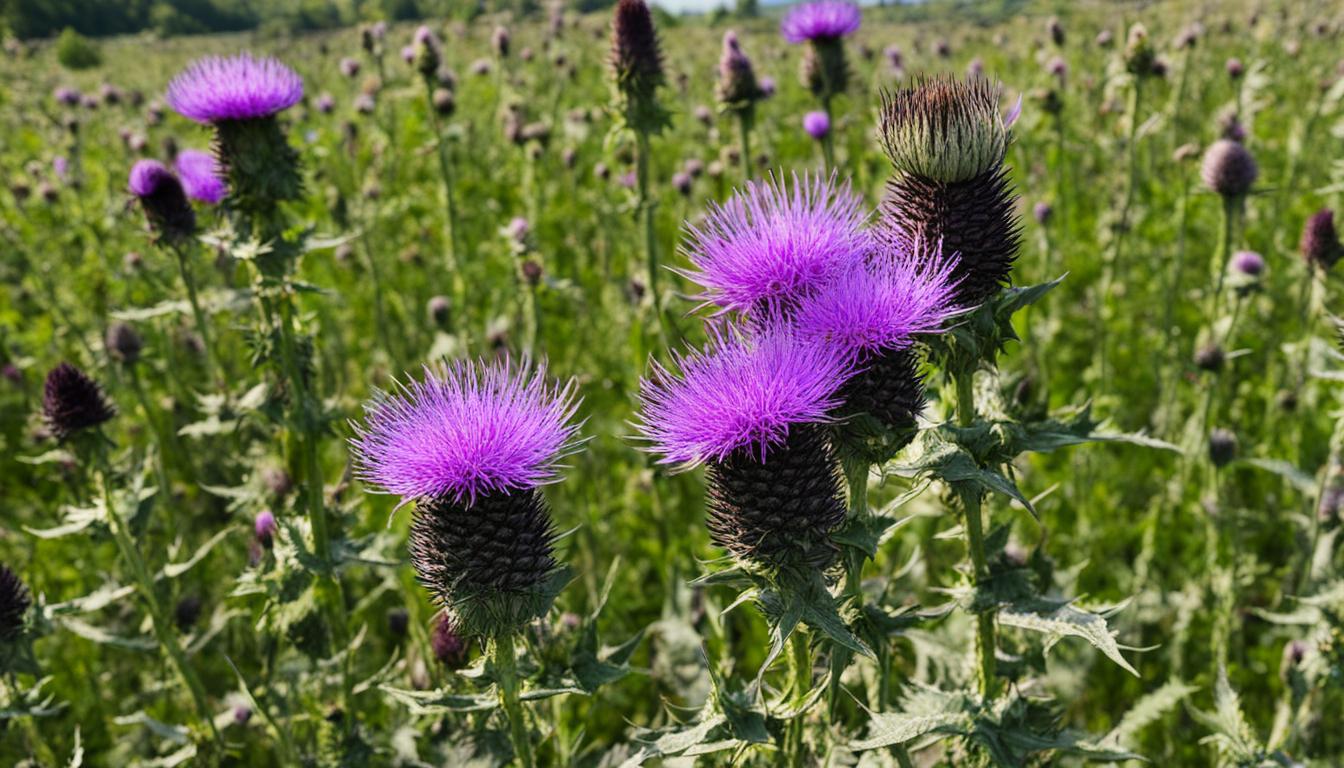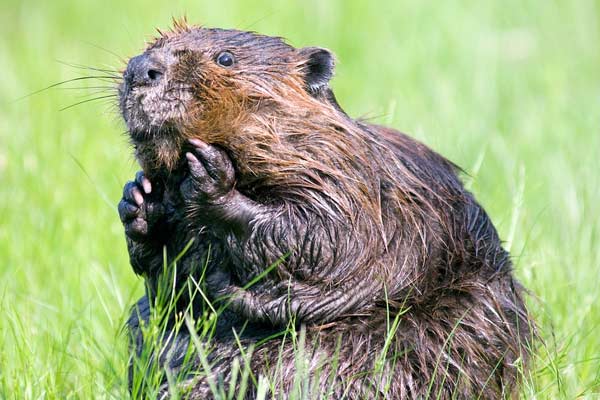How to Get Rid of Canada Thistle: Easy Steps & Tips
Canada Thistle, or Cirsium arvense, is a common invasive weed that can nuisance homeowners, gardeners, and farmers.
This aggressive plant can take over lawns, gardens, and agricultural fields if left unchecked. However, with the proper knowledge and techniques, you can effectively control and eliminate Canada Thistle from your property.
Whether you prefer natural or chemical methods, several options are available for Canada Thistle control.
Key Takeaways:
- Understand the characteristics and growth patterns of Canada Thistle to control it effectively.
- Physically remove the stems and roots of Canada Thistle to prevent regrowth.
- Consider targeted grazing as a control method, using livestock to graze on the thistle.
- Explore natural and organic solutions, such as biological control methods.
- Implement preventive measures to keep Canada Thistle from returning to your property.
Understanding Canada Thistle: Identification and Growth Patterns
Canada Thistle, scientifically known as Cirsium arvense, is an invasive perennial weed in various regions. Recognizing and understanding this troublesome plant is essential to control its growth and prevent its spread effectively.
Canada Thistle is characterized by its spear-like leaves with sharp barbs, making it difficult to handle without protection.
It produces purple pom-pom-shaped flowers that eventually turn into fluffy white seeds. These seeds are easily dispersed by wind and can establish new plants, contributing to the weed’s rapid spread.
Regarding the growth patterns of Canada Thistle, it thrives in open areas with low fertility. This means it can often be found in lawns, gardens, and agricultural fields. The weed can quickly overtake an area if left unchecked.
While Canada Thistle may pose challenges as an invasive species, it is also essential to acknowledge its benefits and risks. The weed plays a role in supporting pollinators such as bees and butterflies with its nectar-rich flowers.
However, its aggressive growth and ability to outcompete other plants can harm agricultural or garden crops. It is crucial to strike a balance by controlling Canada Thistle’s spread while considering its ecological importance.
| Canada Thistle Benefits | Canada Thistle Risks |
|---|---|
|
|
“Canada Thistle, with its barbed leaves and rapid spread, can become a formidable opponent in any garden or field. Understanding its identification and growth patterns is the first step in controlling its presence effectively.” – Gardening Expert
Physical Removal of Canada Thistle
Physical removal is one of the most effective methods for controlling Canada’s Thistle. This involves digging up the entire plant, including the stems and roots. By physically removing the plant, you can ensure that no part of it is left behind to regrow.
When physically removing Canada Thistle, targeting the stems and roots is crucial. Carefully dig around the plant, loosening the soil to access the root system.
Use a garden spade or shovel to lift the entire plant from the ground, removing as much of the root system as possible.
Additionally, repeatedly cutting the stems can weaken the plant and prevent it from producing flowers and seeds.
Regularly trimming the stems with pruning shears or a sharp knife will gradually deplete the plant’s energy reserves and inhibit its reproduction ability. Be sure to dispose of the cut properly stems to prevent them from regrowing.
Benefits of Physical Removal
Physically removing Canada Thistle offers several benefits. First, it allows for precise control, eradicating the entire plant.
Physical removal also eliminates the need for chemical herbicides, making it a safer option for those who prefer organic gardening.
Additionally, removing the plant entirely prevents it from spreading seeds and establishing new plants in the surrounding area.
| Pros of Physical Removal | Cons of Physical Removal |
|---|---|
| Effective eradication of Canada Thistle | Time-consuming process |
| Organic and chemical-free control method | Can be physically demanding |
| Prevents spread of seeds and regrowth | May require repeated removal for complete eradication |
Targeted Grazing as a Control Method
Targeting grazing can be a highly effective method when controlling Canada’s Thistle. By utilizing livestock such as cattle, goats, or sheep, you can leverage their natural feeding behavior to combat this invasive weed.
These animals can consume Canada Thistle without harm, making them excellent allies in your control efforts.
To ensure the success of targeted grazing, it’s essential to implement a strategic approach. Designate specific areas where the thistle is prevalent and allow the livestock to graze selectively.
This targeted approach helps to concentrate grazing pressure on the thistle, minimizing damage to desired vegetation.
Rotational grazing is an effective technique to maximize the benefits of targeted grazing. By rotating the livestock between different sections of your property, you can prevent overgrazing in one area while giving the thistle-infested areas enough attention.
Additionally, maintaining proper stocking densities ensures that the grazing animals can effectively control the thistle without causing damage to the overall ecosystem.
Remember, targeted grazing is not a one-time solution. You may need targeted grazing over multiple seasons to achieve long-term control.
FAQ
What is Canada Thistle?
Canada Thistle is an invasive perennial weed with spear-like leaves, sharp barbs, and purple pom-pom-shaped flowers. It spreads quickly through fluffy white seeds.
How can I identify Canada Thistle?
Canada Thistle has spear-like leaves with sharp barbs and produces purple pom-pom-shaped flowers. The flowers become fluffy white seeds that can spread and establish new plants.
When does Canada Thistle grow?
Canada Thistle can grow throughout the year but is most active during summer.
How do I physically remove Canada Thistle?
Dig up the entire plant, including the stems and roots, to physically remove Canada Thistle. Cutting the stems repeatedly can also weaken the plant. Be careful not to spread the seeds or break off pieces of the root system.
Can I use targeted grazing to control Canada Thistle?
Yes, targeted grazing can be an effective control method. Cattle, goats, and sheep can graze on Canada’s Thistle without harm. Grazing should be done strategically to target the thistle, not the desired vegetation.
What other control methods are there for Canada Thistle?
Other control methods for Canada Thistle include biological control, herbicides such as triclopyr and glyphosate, and replanting the affected area with technical support.
How can I prevent Canada Thistle from coming back?
To prevent Canada Thistle from returning, remove dirt from shoes and equipment, replant larger areas with technical support, and stay alert for any new stem growth following control activities.
Is Canada Thistle safe or beneficial?
Canada Thistle is considered an invasive weed and can cause problems in lawns, gardens, and agricultural fields. It is not regarded as safe or beneficial.







